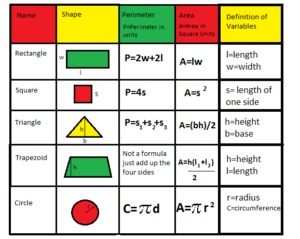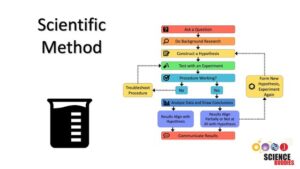By Study Rhino
Chemistry is often seen as a complex subject confined to laboratories and textbooks. However, the truth is that chemistry plays a vital role in our everyday lives—shaping the food we eat, the products we use, and even the emotions we feel. From the moment we wake up to the moment we go to bed, chemistry is constantly at work in our bodies, our homes, and the world around us. In this article, we will explore the crucial and fascinating role that chemistry plays in daily life.
- Chemistry in the Human Body
Our bodies are living laboratories filled with chemical reactions. From digestion to respiration, and even brain function, chemistry keeps us alive and functioning.
- Digestion: When we eat, enzymes in our saliva begin breaking down food. This chemical process continues in the stomach with hydrochloric acid and enzymes like pepsin breaking down proteins. All these are examples of chemical reactions governed by biochemistry.
- Respiration: The act of breathing is a classic chemical exchange—oxygen from the air is exchanged with carbon dioxide in our lungs, and this gas exchange is vital for cellular respiration, which provides us with energy.
- Hormones and Emotions: Feelings such as happiness, stress, or love are governed by chemical messengers like dopamine, serotonin, and adrenaline. These neurotransmitters control how we feel, think, and behave.
- Chemistry in Food and Cooking
Cooking is one of the most relatable and practical applications of chemistry. When you cook or bake, you’re conducting chemical experiments—mixing ingredients, applying heat, and creating new substances.
- Baking a Cake: Baking powder or baking soda reacts with acidic ingredients to produce carbon dioxide gas, which makes the batter rise and gives the cake its soft texture.
- Maillard Reaction: This is a chemical reaction between amino acids and sugars that gives browned foods their delicious flavor—like the crust on bread or the seared surface of meat.
- Preservation: Chemistry helps us preserve food through refrigeration, canning, drying, and adding preservatives, all of which slow down or inhibit the chemical processes that cause spoilage.
- Nutritional Chemistry: Understanding the structure and function of vitamins, minerals, fats, carbohydrates, and proteins helps us make healthier food choices.
- Chemistry in Cleaning and Hygiene
Every time we clean our homes or practice personal hygiene, we rely on the power of chemistry.
- Soaps and Detergents: These work because they are molecules with both hydrophilic (water-attracting) and hydrophobic (water-repelling) ends. They can dissolve grease and oil in water, allowing us to clean effectively.
- Disinfectants and Sanitizers: Chemicals like alcohol, hydrogen peroxide, and chlorine compounds kill bacteria and viruses, keeping our environments safe and hygienic.
- Toothpaste and Mouthwash: Fluoride in toothpaste strengthens tooth enamel, while antiseptics in mouthwash kill harmful microbes.
- Deodorants and Antiperspirants: These contain aluminum compounds and antimicrobial agents that block sweat glands and reduce odor-causing bacteria.
- Chemistry in Medicines and Healthcare
Modern medicine is deeply rooted in chemistry. Pharmaceuticals are chemical compounds specifically designed to treat, cure, or prevent diseases.
- Pain Relievers: Medications like paracetamol and ibuprofen are carefully designed chemical compounds that interact with pain receptors in the body.
- Antibiotics: Penicillin and other antibiotics target and destroy specific bacterial cells without harming human cells, a breakthrough made possible by chemical understanding.
- Vaccines: These contain weakened or inactive forms of pathogens, triggering an immune response and chemical memory in our bodies.
- Diagnostic Tests: From pregnancy tests to COVID-19 antigen kits, chemical reactions help detect the presence of specific molecules.
- Anesthetics and Surgical Drugs: Chemistry ensures these drugs act quickly and wear off safely, enabling complex medical procedures.
- Chemistry in the Environment
Understanding environmental chemistry is essential for tackling issues like pollution, climate change, and resource conservation.
- Air Quality: Chemistry helps us understand pollutants such as carbon monoxide, sulfur dioxide, and nitrogen oxides. Clean air initiatives rely on chemical data and innovations.
- Greenhouse Gases: The rise in carbon dioxide and methane, due to chemical processes like combustion, contributes to global warming.
- Water Purification: Chemical treatments like chlorination, flocculation, and reverse osmosis help make water safe to drink.
- Waste Management: Chemistry helps in recycling materials like plastics and metals and in breaking down organic waste through composting.
- Sustainable Chemistry: Known as green chemistry, this focuses on creating products and processes that reduce or eliminate hazardous substances.
- Chemistry in Clothing and Fabrics
The textile industry depends heavily on chemistry for manufacturing and treating fabrics.
- Synthetic Fibers: Nylon, polyester, and acrylic are man-made polymers designed through chemical processes to be strong, lightweight, and durable.
- Dyeing and Printing: Chemical dyes and fixatives are used to color fabrics in ways that resist fading.
- Waterproof and Flame-retardant Materials: Special chemical coatings give fabrics protective properties, such as being water-resistant or fire-safe.
- Detergents and Fabric Softeners: Chemically formulated to clean clothes without damaging the fibers, and to reduce static cling or roughness.
- Chemistry in Cosmetics and Beauty Products
Personal care items are formulated using chemistry to ensure they are safe, effective, and appealing.
- Shampoos and Conditioners: Use surfactants and pH balancers to clean hair without stripping natural oils.
- Makeup: Uses pigments, emulsifiers, and preservatives to ensure smooth application, long wear, and safety.
- Sunscreens: Contain chemical compounds like oxybenzone and zinc oxide to absorb or reflect harmful UV rays.
- Perfumes and Colognes: Made through the chemical blending of essential oils, alcohols, and aromatic compounds.
- Chemistry in Technology and Electronics
Modern devices wouldn’t exist without chemistry. From batteries to computer chips, chemical principles are foundational.
- Batteries: Chemical reactions within batteries convert stored chemical energy into electrical energy. Lithium-ion batteries power phones, laptops, and electric cars.
- Semiconductors: Silicon, a chemically treated element, is the heart of computer chips and electronics.
- Display Screens: OLEDs and LCDs use specially designed chemical compounds that emit light or control pixels.
- 3D Printing: Utilizes chemical polymers and resins to build objects layer by layer.
- Chemistry in Transportation and Fuel
Our modes of transportation rely on chemistry for energy, materials, and safety.
- Fuels: Petrol, diesel, and natural gas are hydrocarbon compounds that release energy when burned.
- Lubricants: Chemical oils reduce friction in engines and machinery, improving efficiency and lifespan.
- Emission Control: Catalytic converters use chemistry to reduce harmful exhaust gases.
- Electric Vehicles: Innovations in chemical battery design are enabling cleaner and more efficient electric transport.
- Chemistry in Emotions and Relationships
Believe it or not, chemistry influences human relationships, emotions, and attraction.
- Love and Attraction: Hormones like oxytocin, dopamine, and pheromones—all chemical messengers—play a role in bonding and emotional connection.
- Stress and Relaxation: Cortisol is released in stressful situations, while endorphins are released during exercise or laughter, making us feel good.
Conclusion: Chemistry is Life
Chemistry is not just a subject studied in school—it is the science of life itself. From the invisible reactions in our cells to the visible changes in our kitchens, chemistry is a constant presence that influences our health, comfort, and even our happiness. Understanding chemistry not only deepens our appreciation for the world around us but also empowers us to make smarter choices in our daily lives—from what we eat and wear to how we clean, travel, and interact with others.
At Study Rhino, we believe in breaking down complex ideas into simple, relatable knowledge. Chemistry is everywhere—it’s in the air we breathe, the love we feel, and the tools we use. So, next time you hear someone say, “It’s just chemistry,” remember, it truly is—and it’s amazing!




